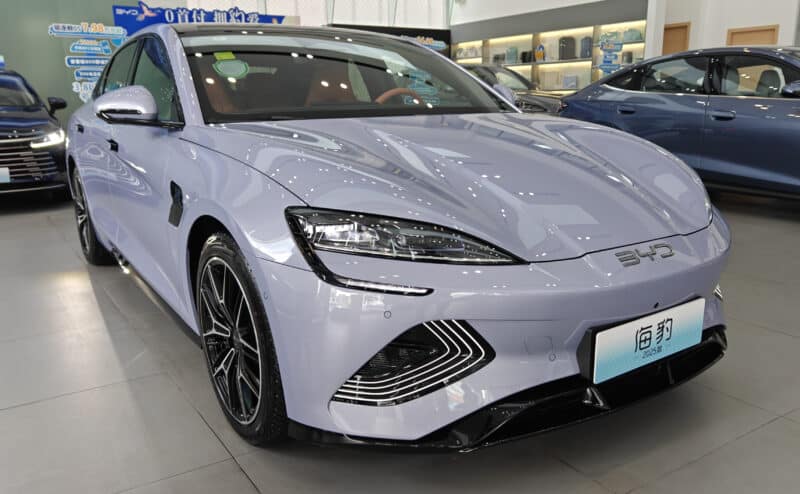BYD 2025 Seal launched: with LiDAR, 800V platform, and 0-100 km/h in 3.8s
BYD has launched the 2025 Seal electric sedan, featuring cutting-edge SiC ((Silicon Carbide) technology and an 800V high-voltage platform. The sedan now includes a LiDAR sensor mounted on the roof, a first for BYD sedans, which enhances its Advanced Driver Assistance Systems (ADAS) functions. The Seal 07 DM-i was launched at the same event.

| 2025 Seal lineup | |
| Model | Price |
| 510 Standard Edition | 175,800 yuan (24,500 USD) |
| 650 Long Range Edition | 189,800 yuan (26,450 USD) |
| 650 Intelligent Driving Edition | 216,800 yuan (30,200 USD) |
| 600 Four-Wheel Drive Intelligent Driving Edition | 239,800 yuan (33,400 USD) |

It is built on the e-Platform 3.0 Evo, the same platform used for the Sealion 07 (see specs). The vehicle features a 1,200V SiC control system and a high-performance 23,000 rpm motor with a maximum speed of 240 km/h and a 0-100 km/h acceleration in 3.8 seconds. It uses CTB (Cell-to-Body) battery integration technology, an advanced wide-temperature heat pump system, and supports 800V technology, enabling a 10%-80% charge in just 25 minutes.

The 2025 Seal offers two battery options: 61.44 kWh and 80.64 kWh, providing a CLTC range of 510 km to 650 km. The base model features a 170 kW (228 hp) rear-motor variant, while more powerful versions include a 230 kW (308 hp) option. The top trim offers 390 kW (523 hp) with all-wheel drive.




The 2025 Seal benefits from an upgraded chassis that features BYD’s Disus-C system. This enhances the suspension’s overall adaptability, stability, comfort, and handling. The four-wheel-drive variant also includes this advanced damping control system.

The new model retains the current dimensions — 4800 mm in length, 1875 mm in width, 1460 mm in height, and a 2920 mm wheelbase — ensuring its design and size continuity. Design updates are subtle. The Seal now features a redesigned interior. It has a distinctive four-spoke flat-bottom steering wheel and BYD’s iconic large central floating control screen, which can conveniently rotate. The interior includes a minimalist center console with physical buttons, hidden air-conditioning outlets, and wireless charging pads. All models come standard with 13 airbags and a W-HUD head-up display.



The sedan now includes a LiDAR sensor that enhances its ADAS functions. This addition significantly improves the vehicle’s autonomous driving capabilities, integrating with the L2+ level DiPilot 300 system. This system includes high-speed and urban Navigation on Autopilot (NOA) and Automated Valet Parking (AVP) features.




The 2025 Seal maintains its original name despite initial plans to rebrand it as the Seal 07 EV. This decision came in response to substantial feedback from BYD enthusiasts who preferred the familiar Seal name. Since its launch domestically in China, the original BYD Seal EV sedan has been unable to crack the top ten best-sellers list. It remains to be seen that this refreshed model can break this trend.



